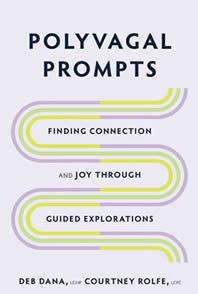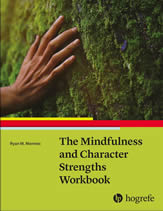The Human Elements of Psychotherapy: A Nonmedical Model of Emotional Healing
The Human Elements of Psychotherapy is unique in its call for the rebirth of psychotherapy as a nonmedical procedure. David N. Elkins, Ph.D., experienced clinician and professor, cautions that a medical approach, which has long been accepted as the dominant paradigm in psychotherapy, is not the appropriate model when it comes to psychological healing.
THE LAST MONTH
Marcel Duclos wrote his latest book in honor of his dear friend and colleague Connie Robillard. It is a collection of thirty poems, one written every day as she navigated her way through the last month with ocular melanoma as a companion.
Why Therapy Works: Using Our Minds to Change Our Brains
With remarkable candor, Louis Cozolino opens with an anecdote about the client who first challenged his unquestioning faith in psychotherapeutic efficacy and shook his confidence as a clinician. Needless to say, psychotherapy is in the business of dealing with the intangible, making sense of the amorphous feelings that give rise to suffering, and, thus, this story perfectly captures the doubt that often dispirits both clients and clinicians in the healing process.
Trauma and Memory: Brain and Body in a Search for the Living Past
Trauma and Memory illuminates the relationship between the body, memory and emotions. Levine brings hope to trauma sufferers with somatic techniques, but also highlights the complexity of combating traumatic memory. We must take the time to better comprehend the connection between our bodies and emotions, and work towards transforming the responses associated with traumatic memories. Ultimately, Trauma and Memory is a stepping-stone towards a better understanding of the mechanisms of memory through its application of the somatic experience approach.
The Man Who Couldn’t Stop:
David Adam manages to describe his everyday experiences with OCD in an innovative and enlightening way while simultaneously intertwining his narrative with the accounts of other sufferers, theory, and scientific studies. It is a book on history, psychology, neuroscience, philosophy, anthropology, and religion and is an essential read for anyone who has, knows somebody with, or is simply interested in OCD.
How We Heal And Grow
Jeffrey Smith, MD offers his definitive self-help guide to personal change in therapy and in life. He believes that healing takes place when feelings are shared with an empathically attuned and safe other and together you will explore motivations, behaviors and places that harbor resistance to change in order to let go and grow forward.
Being Mortal
Being Mortal: Medicine and What Matters in the End challenges our medical system to refocus its approach to aging, terminal illness, and death and dying. According to Atual Gawande, medical professionals' job is not to ensure health and survival but to enable well-being. Atul Gawande’s powerful presence on the page, his intimate and detailed vignettes, his humble authenticity, and his personal motivation to write this book make this a must read.
Deep Play: Exploring the Use of Depth Psychotherapy with Children
Nancy Eichhorn, PhD, offers readers a personal and in-depth review of Deep Play: Exploring the Use of Depth Psychotherapy with Children. The chapters in this startling book highlight the power of presence in play, in imagination, and in relationship.
Hakomi Mindfulness-Centered Somatic Psychotherapy: A Comprehensive Guide to Theory and Practice
Perhaps it’s because the contributors and editors are all Hakomi specialists, perhaps it’s because they are not just practitioners of this methodology but have sincerely immersed themselves in Hakomi’s foundational precepts personally and professionally: mindfulness, presence, loving kindness, and nonviolence. I felt as if the material was written according to the core essence of Hakomi— “assisted self-study done in a state of mindfulness”.
The Body Keeps the Score
Bessel van der Kolk’s, The Body Keeps The Score: Brain, Mind, and Body in the Healing of Trauma, takes a detailed, well-researched, and multidisciplinary approach to discussing trauma and how it can be treated clinically.














